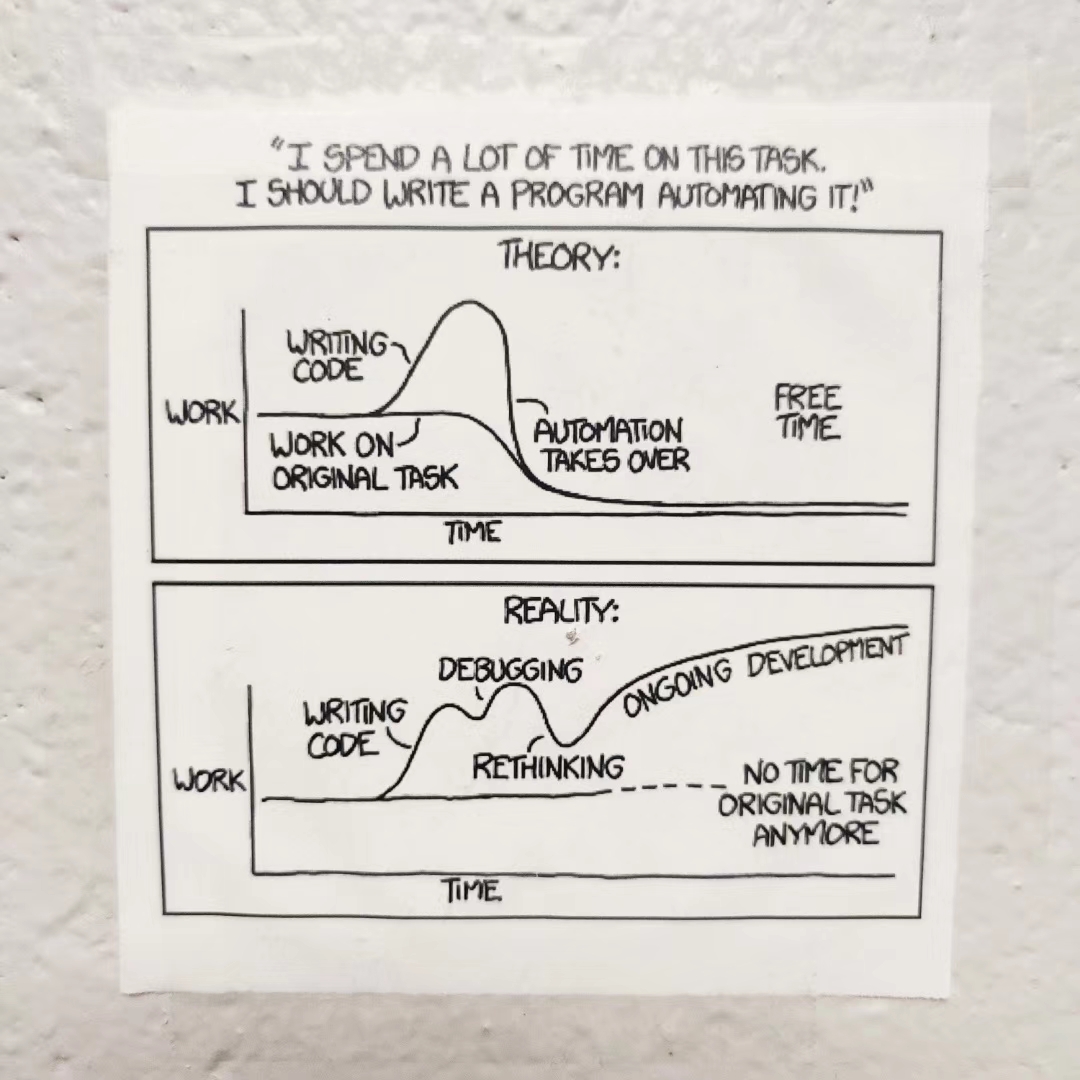star-qaboard-l@lists.bnl.gov
Subject: STAR QA Board
List archive
- From: "Hu, Yu" <yuhu@bnl.gov>
- To: Ting Lin <tinglin@sdu.edu.cn>, Eugenia Khyzhniak <eugenia.sh.el@gmail.com>
- Cc: "star-qaboard-l@lists.bnl.gov" <star-qaboard-l@lists.bnl.gov>
- Subject: Re: [STAR-QAboard] QA Board Meeting July 22
- Date: Fri, 22 Jul 2022 18:03:07 +0000
Hi Eugenia,
Today you asked if one automated algorithm can not give you exactly the runs marked as bad by the shifters, then why do we go this complicated. I'm very frustrated but not because of a question about whether an algorithm is needed or not(of course it's needed),
but because right now we don't have a package that can do such work you mentioned, so people have to spend a lot of their time to do it by hand. A naive thought is a webspider&AI to read shift log and analysis would be very helpful, if you are interested,
maybe we can discuss it a little bit more.
A few things I want to share with you about why we need to do the run-by-run QA and why we want to do it in this way. Looks like you have some confusion.
Based on my understanding, first of all, going to the shift log and finding which run is "bad" in person is one of the steps(also the most important step). It will help you find during the running what effort has been done by the experts and what happens
to the detector. But this work will be very challenging when you have a big data set like hundreds or thousands of runs. And also, the information on the log might be a delayed response like the shift leader notices an issue that may already happened for a
while. Then to track from which run it happened, and then mark rather it's really bad is even more challenging.
Another possible issue is some runs are marked as bad for one of the subsystems, but that doesn't mean people, who don't use that subsystem in their analysis, cannot use that run. If one can have a detector good/problem checklist for each run that would
be very good, but it is also not very easy when you have hundreds of runs.
That's why people start to look into the physics variables and then check the outliers. So they can find the outliers first, marked as bad run candidates, and then go to the shift log to check these few runs if they are really "bad". This will save a lot
of time for the analyzers and speed up their analysis flow. An extra benefit we got from this is the unnormal behavior of the variable can also tell us to pay more attention to check the possible issues. Previously people use 5-RMS over all the runs and find
the outliers. But that would be an issue if there is a significant change, like detectors gains, you will end up with many stable "steps", which may bring more complicated. That's why we develop this algorithm and also what this algorithm can only do. I remember
when I start to do my first analysis, to get more statistics, we need to separate which small clusters by eye and then find rather there is a reason in the shift log, which is very painful.
You may know the original algorithm was developed for the isobar blind analysis, but it was already finished and served well. We pushed this algorithm forward, tried to improve it, and wanted to share it with the group are just want people who start their
new data, and news analysis, can do it faster and have less pain. Once you said you don't care which algorithm is used because in any way it takes only a few minutes, I'm frustrated but also happy, which means our package works well. But it's also welcome
to run people's own algorithms or criteria whichever do a similar thing.
Thank you.
Best,
Yu

From: Ting Lin <tinglin@sdu.edu.cn>
Sent: Friday, July 22, 2022 8:24
To: Hu, Yu <yuhu@bnl.gov>
Cc: star-qaboard-l@lists.bnl.gov <star-qaboard-l@lists.bnl.gov>
Subject: Re: Re: [STAR-QAboard] QA Board Meeting July 22
Sent: Friday, July 22, 2022 8:24
To: Hu, Yu <yuhu@bnl.gov>
Cc: star-qaboard-l@lists.bnl.gov <star-qaboard-l@lists.bnl.gov>
Subject: Re: Re: [STAR-QAboard] QA Board Meeting July 22
Hi Yu:
Thanks, I have added into the agenda.
Best,
Ting
-----Original Messages-----
From:"Hu, Yu" <yuhu@bnl.gov>
Sent Time:2022-07-22 16:10:37 (Friday)
To: "star-qaboard-l@lists.bnl.gov" <star-qaboard-l@lists.bnl.gov>, "Ting Lin" <tinglin@sdu.edu.cn>
Cc:
Subject: Re: [STAR-QAboard] QA Board Meeting July 22
Dear Ting, and All,
Please find our slides for the tutorial from the link below:
Thank you.Best,Yu
From: STAR-QAboard-l <star-qaboard-l-bounces@lists.bnl.gov> on behalf of Ting Lin via STAR-QAboard-l <star-qaboard-l@lists.bnl.gov>
Sent: Tuesday, July 19, 2022 23:06
To: star-qaboard-l@lists.bnl.gov <star-qaboard-l@lists.bnl.gov>
Subject: [STAR-QAboard] QA Board Meeting July 22Hi all:
We will have a QA board meeting on Friday at noon BNL time. As discussed last week, we will have a tutorial session for Run-by-Run QA.
If you have slides to show, please link to the meeting page (in link below) or send it to me.
https://drupal.star.bnl.gov/STAR/event/2022/07/22/QA-Board-Meeting
Join ZoomGov Meeting:
https://urldefense.com/v3/__https://bnl.zoomgov.com/j/1618435669?pwd=L3B6M3JKcjRFMVFxQTNhaEdBdkZ5UT09__;!!P4SdNyxKAPE!BqECZdWod0cgy_FRmaFufxIlmeFvORSda0LXJBs2Jc2JvjJ6xk-0fPVe4qG5YlgcBF_YUKXnAsIoTSy-9IfZM6BsSON8VAc$
Meeting ID: 161 843 5669
Passcode: 194299
All the previous agendas are listed in the page below:
https://drupal.star.bnl.gov/STAR/comp/qa/pwg-qa/run-22-qa
Thanks.
Ting
_______________________________________________
STAR-QAboard-l mailing list
STAR-QAboard-l@lists.bnl.gov
https://lists.bnl.gov/mailman/listinfo/star-qaboard-l
-
[STAR-QAboard] QA Board Meeting July 22,
Ting Lin, 07/19/2022
-
Re: [STAR-QAboard] QA Board Meeting July 22,
Hu, Yu, 07/22/2022
-
Re: [STAR-QAboard] QA Board Meeting July 22,
Ting Lin, 07/22/2022
-
Re: [STAR-QAboard] QA Board Meeting July 22,
Hu, Yu, 07/22/2022
-
Re: [STAR-QAboard] QA Board Meeting July 22,
Eugenia Khyzhniak, 07/22/2022
- Re: [STAR-QAboard] QA Board Meeting July 22, Hu, Yu, 07/23/2022
-
Re: [STAR-QAboard] QA Board Meeting July 22,
Eugenia Khyzhniak, 07/22/2022
-
Re: [STAR-QAboard] QA Board Meeting July 22,
Hu, Yu, 07/22/2022
-
Re: [STAR-QAboard] QA Board Meeting July 22,
Ting Lin, 07/22/2022
-
Re: [STAR-QAboard] QA Board Meeting July 22,
Hu, Yu, 07/22/2022
Archive powered by MHonArc 2.6.24.